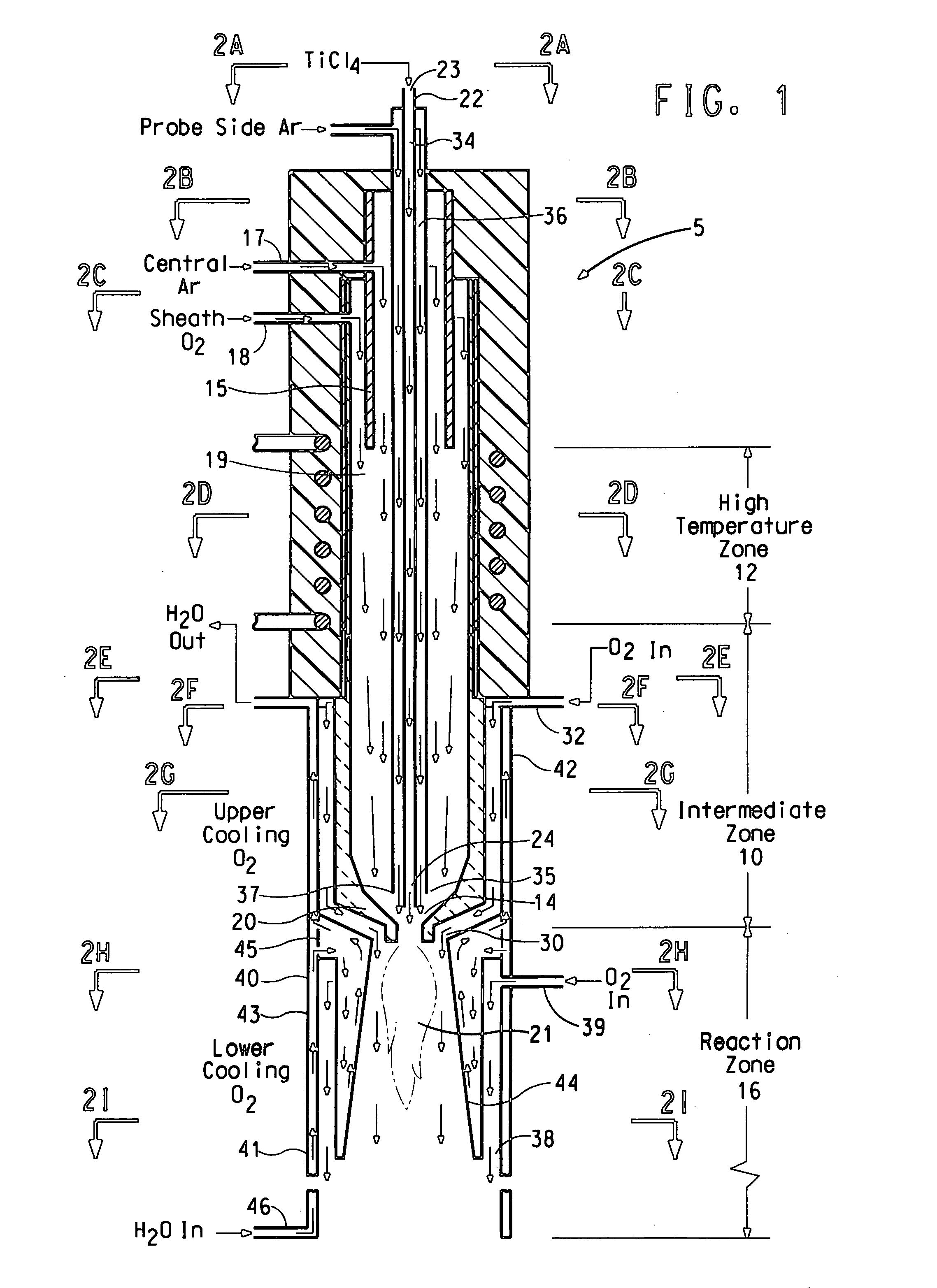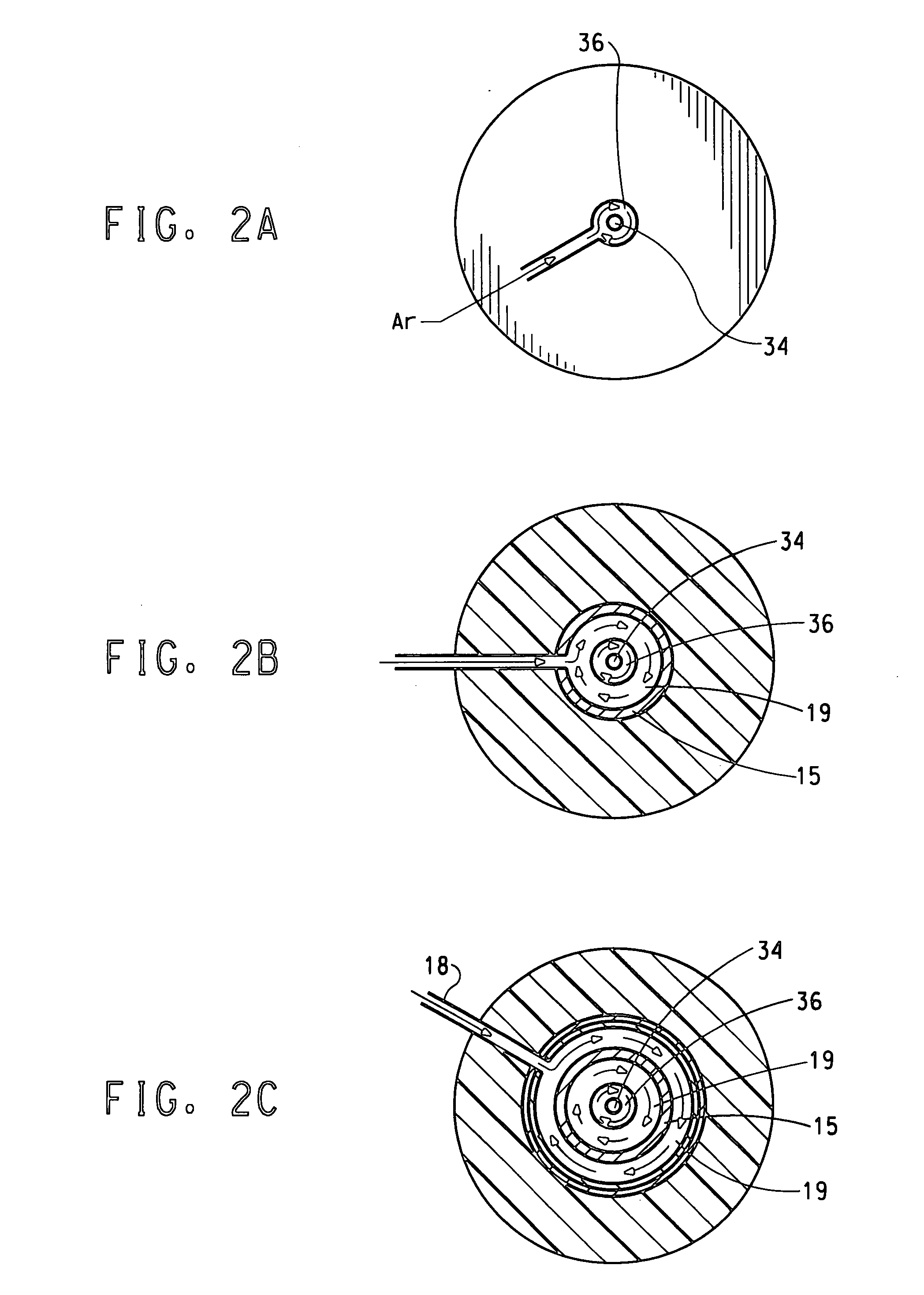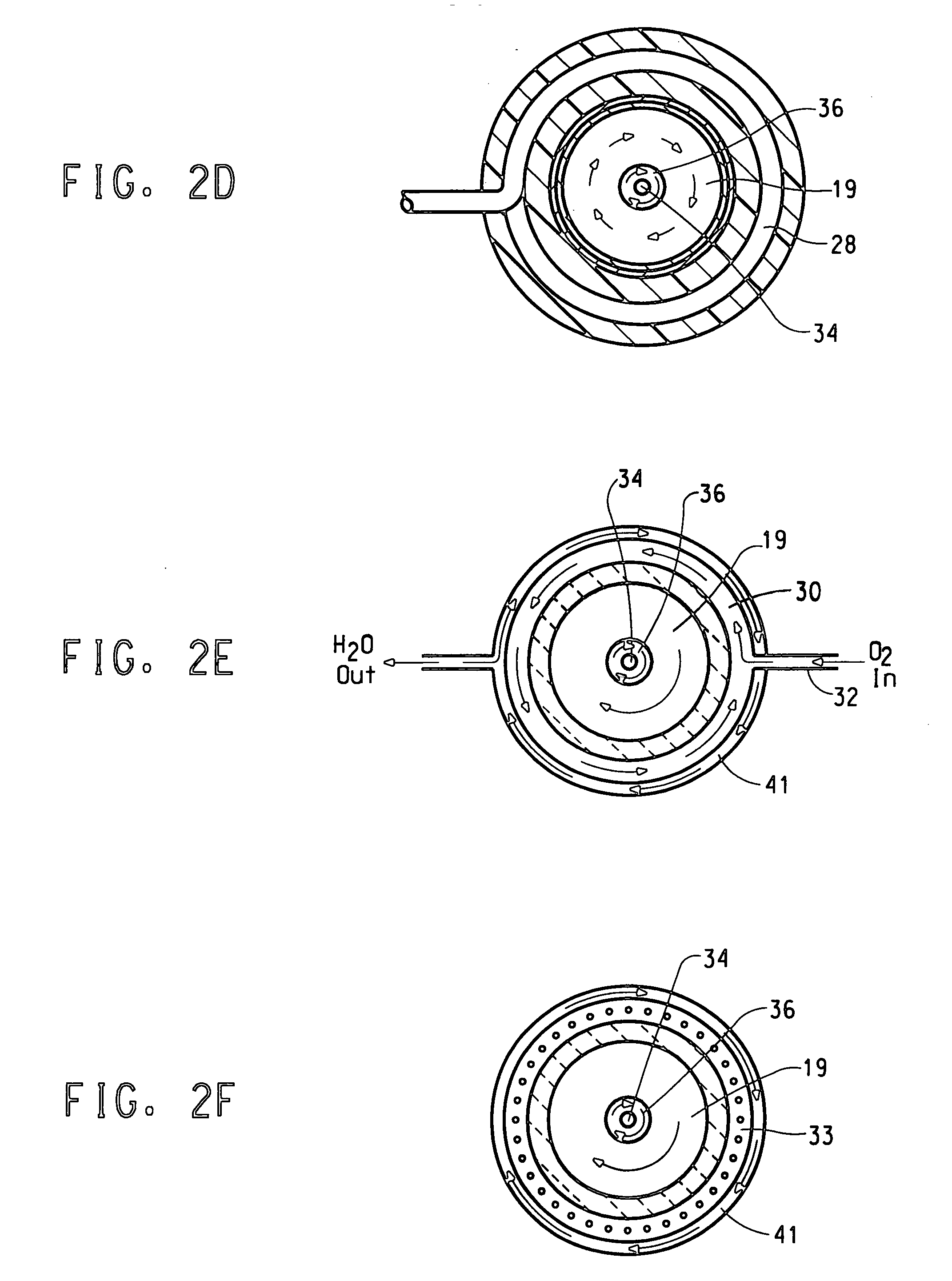Process for making metal oxide nanoparticles
a metal oxide and nanoparticle technology, applied in silicon oxides, oxygen/ozone/oxide/hydroxide, silicon compounds, etc., can solve the problems of insufficient accumulation of dust to require the reactor to be shut down for cleaning, and no substantial contribution of dust, so as to reduce and even eliminate the coarse tail and high degree of transparency
- Summary
- Abstract
- Description
- Claims
- Application Information
AI Technical Summary
Benefits of technology
Problems solved by technology
Method used
Image
Examples
example 1
[0091] Oxygen gas flowing at 300 standard liters per minute (slpm0 and a temperature of 20° C. was introduced to a sleeve 19 of the flow reactor 5 through the oxidizing agent inlet 18 upstream of the high temperature zone. Argon gas flowing at 30 slpm, temperature of 20° C. was introduced to a central channel 15 via the plasma-forming gas inlet 17 to form the hot plasma. Local plasma temperatures exceed 10,000° C. In the high temperature zone, the high temperature plasma mixed with the oxygen to form a hot gas mixture that flowed downwards through the high temperature zone 12 towards the reaction contacting region. The temperature of the oxygen and argon gas mixture in the reaction zone was 1000 to 3000° C. The argon and oxygen gases had a near laminar flow.
[0092] TiCl4 vapor flowing at 10 gram / min at a temperature of 140° C. mixed with argon gas flowing at 10 slpm was introduced into the center of the flow reactor 5 via a ⅛-inch ID inner tube 34. Argon gas flowing at 27 slpm was i...
PUM
| Property | Measurement | Unit |
|---|---|---|
| Reynolds Number | aaaaa | aaaaa |
| diameter | aaaaa | aaaaa |
| size | aaaaa | aaaaa |
Abstract
Description
Claims
Application Information
 Login to View More
Login to View More - R&D
- Intellectual Property
- Life Sciences
- Materials
- Tech Scout
- Unparalleled Data Quality
- Higher Quality Content
- 60% Fewer Hallucinations
Browse by: Latest US Patents, China's latest patents, Technical Efficacy Thesaurus, Application Domain, Technology Topic, Popular Technical Reports.
© 2025 PatSnap. All rights reserved.Legal|Privacy policy|Modern Slavery Act Transparency Statement|Sitemap|About US| Contact US: help@patsnap.com



